- JST Home
- /
- Strategic Basic Research Programs
- /
 PRESTO
PRESTO- /
- project/
- Exploring Quantum Frontiers Through Quantum-Classical Interdisciplinary Fusion/
- [Quantum frontiers] Year Started : 2024
[Quantum frontiers] Year Started : 2024
Ryota Katsumi
On-chip scalable quantum information processing empowered by heterogeneous materials with nanostructures
Grant No.:JPMJPR24F1
Researcher
Ryota Katsumi

Associate Professor
Graduate School of Engineering
Toyohashi University of Technology
Outline
Photons are one of the attractive candidates for quantum applications owing to their excellent properties of room-temperature operation and long-distance propagation. It will be possible to realize scalable quantum information processing on a compact photonics chip by leveraging the power of integrated photonics. However, it is challenging for a single material to cover all the functionalities. In this study, I will demonstrate integrated quantum photonic devices operated near room temperature by enhancing functionalities of heterogeneous quantum components and their hybrid integration.
Thanh Phuc Nguyen
Mixed Quantum-Classical Multiscale Theoretical Study of Molecular Polariton Physics and Chemistry
Grant No.:JPMJPR24F2
Researcher
Thanh Phuc Nguyen
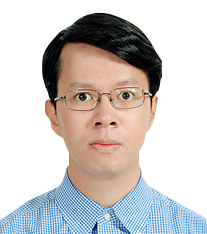
Senior Lecturer
Graduate School of Engineering
Kyoto University
Outline
Molecular polaritons are hybrid states that arise from the strong coupling between molecular electronic or vibrational excitations and an optical cavity mode, presenting a promising approach for controlling molecular systems. However, the intricate nature of these hybrid systems has made it challenging to fully understand the underlying mechanisms. This study seeks to develop a mixed quantum-classical multiscale theoretical framework to explore the physical properties and chemical reactivity of molecular polaritons in complex, real-world molecular systems. The theory will enable quantitative predictions and facilitate the design of hybrid light-matter systems with tailored properties.
Kenji Shu
Study on particle physics via interferometry of the purely leptonic particle-antiparticle pair
Grant No.:JPMJPR24F3
Researcher
Kenji Shu
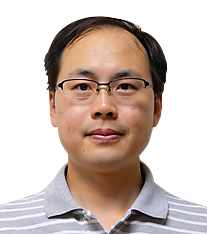
Research Scientist
Center for Emergent Matter Science (CEMS)
RIKEN
Outline
Precision measurements for studying on particle physics will be conducted by realizing an atomic interferometer of positronium (Ps), which consists of leptonic elementary particles only. Despite that the simple structure of Ps allows rigorous theoretical treatments, its light mass makes precision measurements difficult. This problem will be solved by integrating with quantum control technologies such as laser cooling. Goals of this research are solving mysteries of particle physics via the most precise determinations of strengths of the electromagnetic force and the gravitational force on the antiparticle.
Takanori Sugimoto
Search for Quantum Functionality with Topological Breadboard
Grant No.:JPMJPR24F4
Researcher
Takanori Sugimoto
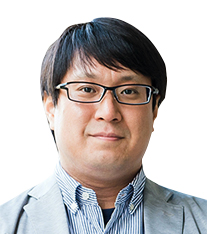
Specially-appointed Associate Professor
Center for Quantum Information and Quantum Biology
The University of Osaka
Outline
Topological properties in many-body quantum systems are anticipated to have significant applications in a wide range of next-generation quantum functional materials. However, it is wel-known that their analysis remains highly challenging, even when employing supercomputing resources. In this study, we aim to develop a suite of quantum gate algorithms, referred to as a “topological breadboard,” designed to facilitate the analysis and control of these many-body topological properties utilizing contemporary quantum computing platforms. Additionally, this framework will be employed to explore the validation of next-generation quantum computing architectures and to propose novel quantum devices.
Manabu Tsujimoto
Development of a short-range terahertz wireless communication system in a dilution refrigerator
Grant No.:JPMJPR24F5
Researcher
Manabu Tsujimoto

Senior Researcher
Core Electronics Technology Research Institute
National Institute of Advanced Industrial Science and Technology (AIST)
Outline
To mitigate the heat influx limiting the scalability of quantum computers, I propose developing a short-range THz wireless communication system using frequency modulation (FM) in high-temperature superconducting Josephson plasma emitters (JPE). By reducing the number of cables, this approach will improve efficiency, power savings, and cost-effectiveness, while facilitating the miniaturization of dilution refrigerators. The project will integrate advanced quantum technologies with THz and B5G/6G systems, focusing on optimizing communication stability, noise resistance, and thermal performance.
Shuta Nakajima
Development of fundamental technology for continuous loading of neutral atom arrays toward measurement-based quantum computation
Grant No.:JPMJPR24F6
Researcher
Shuta Nakajima

Associate Professor
Center for Quantum Information and Quantum Biology
The University of Osaka
Outline
Recently, optical tweezer arrays of cold neutral atoms have attracted much attention as a platform for realizing quantum computers. In this project, we aim at continuous laser cooling of ytterbium atoms which have various narrow-line transitions and have nuclear spin qubits with long coherence time. We also aim to develop a fundamental technology for the continuous generation of optical tweezer arrays of ytterbium atoms for applications in quantum error correction and measurement-based quantum computation.
Hiroki Nagashima
The mechanism of magnetic response generated by the structure of biomolecules
Grant No.:JPMJPR24F7
Researcher
Hiroki Nagashima

Assistant professor
Graduate School of Science and Engineering
Saitama University
Outline
It is widely known that animals, such as migratory birds, can detect magnetic fields. This study aims to clarify the mechanism of the magnetic field effect on proteins by investigating the magnetic properties and structures. In addition, this study will address the challenge of controlling reactions through the use of static magnetic fields and electromagnetic fields. This research will contribute to future medical and biotechnological applications using the magnetic field effects in biomolecules
Taro Hasegawa
Quantum information in string rf ion traps
Grant No.:JPMJPR24F8
Researcher
Taro Hasegawa
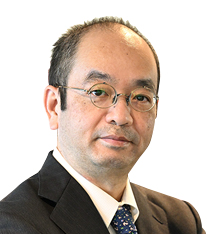
Assistant Professor
Faculty of Science and Technology
Keio University
Outline
The aim of this study is to develop rf ion traps based on a new design called “string rf ion traps”. The string rf ion traps feature a large solid angle for collecting laser-induced fluorescence from trapped atomic ions and the ability to adjust the trap size, making it a highly promising method for quantum information experiments. This study focuses on realizing this design and applying it to quantum simulations using a two-dimensional array of string rf ion traps.
Tomosato Hioki
Magnon Quantum Optics: A Path to Novel Quantum Systems
Grant No.:JPMJPR24F9
Researcher
Tomosato Hioki
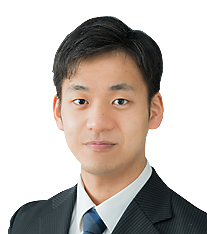
Research Associate
Graduate School of Engineering
The University of Tokyo
Outline
Based on the theoretical framework of quantum optics, we aim to utilize the characteristics of magnons, elementary excitations in magnetic materials, to realize continuous-variable quantum states of magnons in ferromagnetic materials—something that has not previously been possible as carriers of quantum information. By optimizing the material and device structure to enhance the strong nonlinearity of magnons, and by generating quantum states stabilized through parametric processes, we will experimentally demonstrate the usefulness of magnetic materials as carriers of quantum information.
Takaya Matsuura
Development and applications of quantum universal codes
Grant No.:JPMJPR24FA
Researcher
Takaya Matsuura

Postdoctral Researcher
Center for Quantum Computing (RQC)
RIKEN
Outline
Universal coding is a way of constructing an encoder and a decoder for an information source or a channel without detailed knowledge of it. I extend the theory of universal coding to quantum communications, especially for the unestablished scenarios of private information transmission and quantum information transmission. Furthermore, universal coding has an intrinsic affinity to the theory of quantum key distribution, which aims to share secret keys between two parties with an untrustful quantum channel. I thus apply the theory of universal coding to security proofs of quantum key distribution protocols and establish a new universal framework for security approach.













